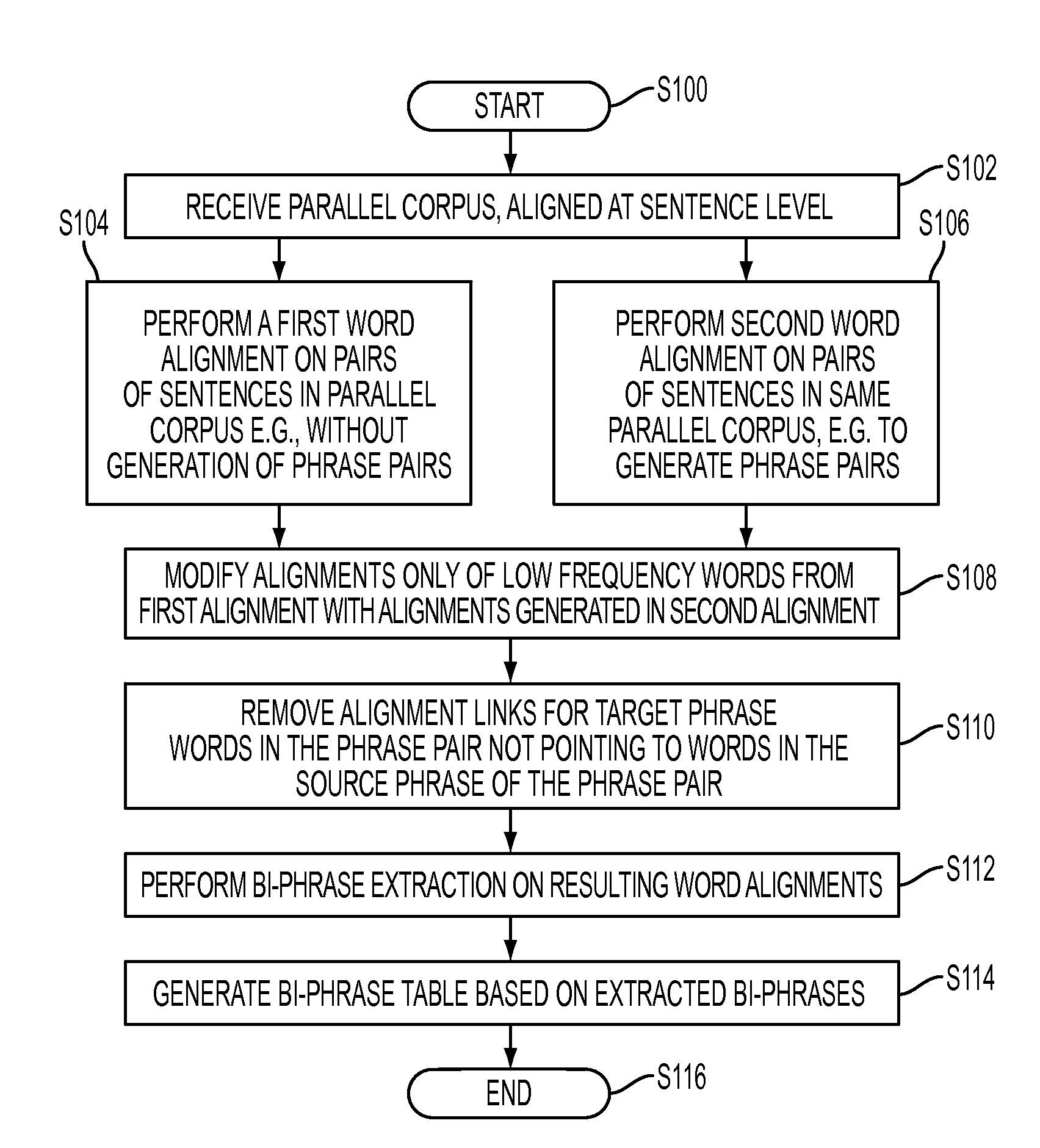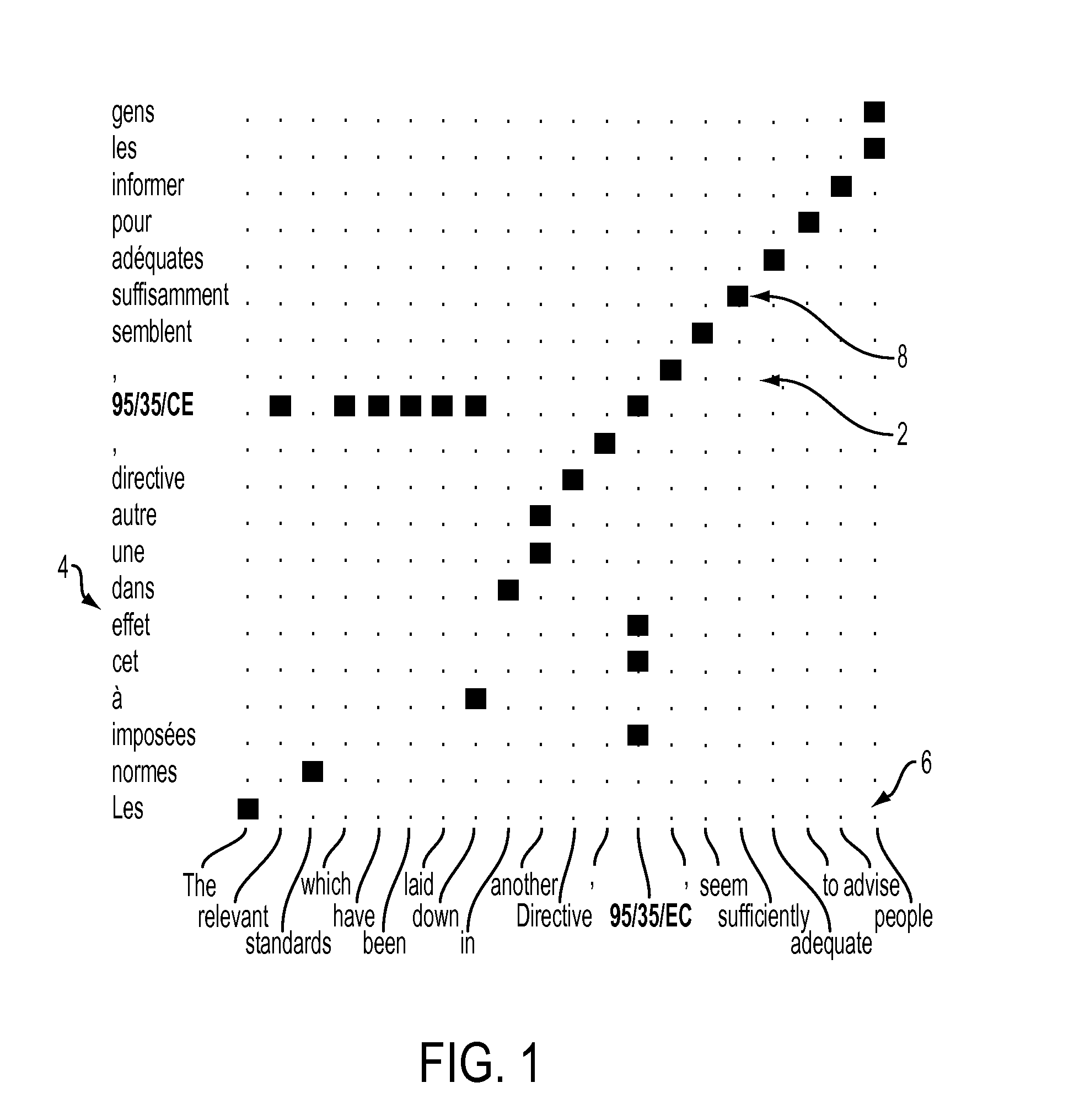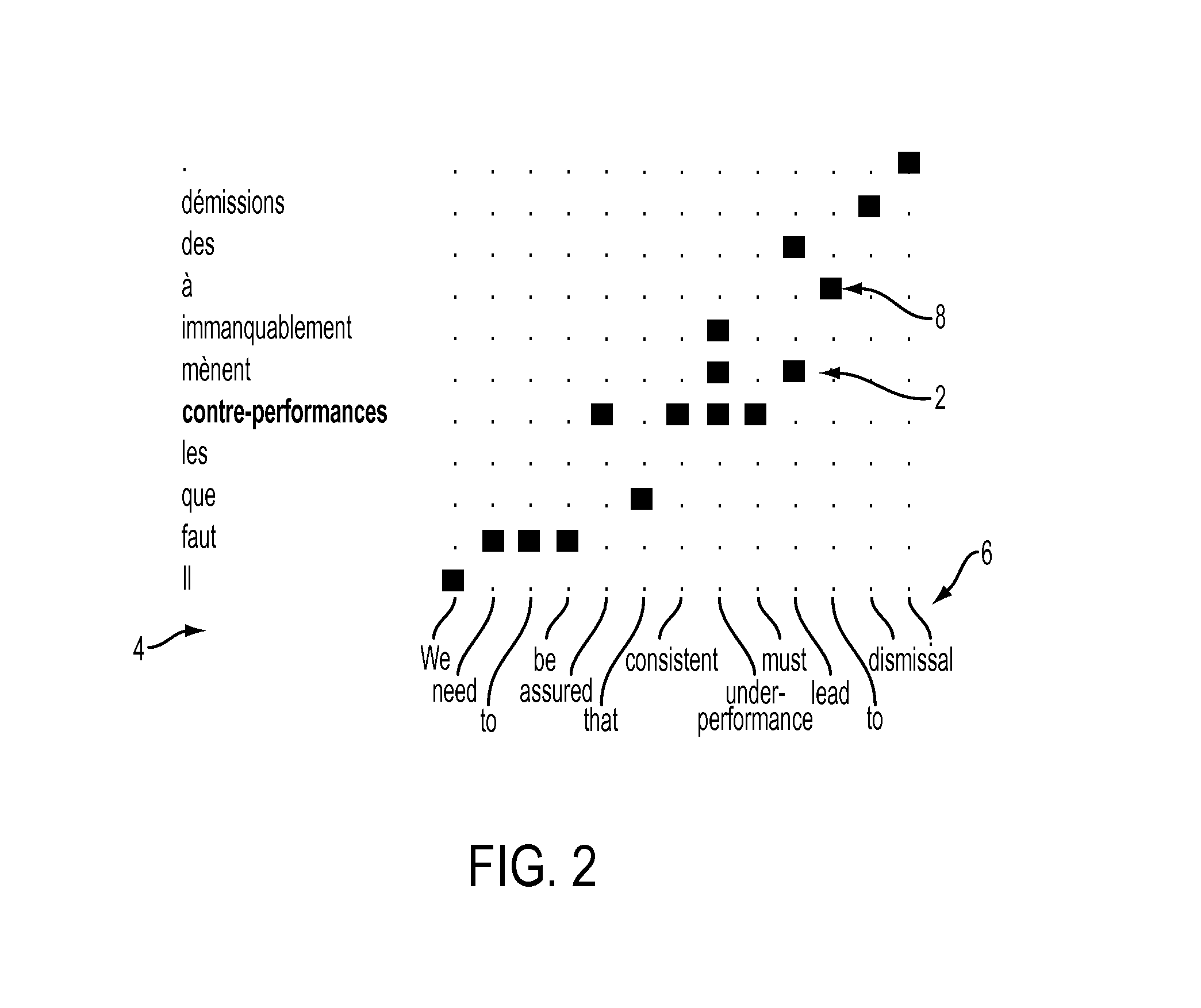Word alignment method and system for improved vocabulary coverage in statistical machine translation
a statistical machine translation and word alignment technology, applied in the field of machine translation, can solve problems such as difficult to obtain precise alignments of low-frequency words, out-of-vocabulary words, and translation systems
- Summary
- Abstract
- Description
- Claims
- Application Information
AI Technical Summary
Benefits of technology
Problems solved by technology
Method used
Image
Examples
example 1
A Comparison of Different Alignment Systems
[0075]Phrase tables 20 for a phrase-based machine translation system were constructed according to the exemplary method using as the corpus 10, the French-English and German-English versions of the Europarl corpus, described in Philipp Koehn. Europarl: A Parallel Corpus for Statistical Machine Translation, Proc. 10th Machine Translation Summit, pages 79-86, Phuket, Thailand, 2005 (hereinafter Koehn 2005). The performance of such a translation system was compared with those using phrase tables derived using existing word / phrase alignment methods. Performance was calculated by determining OOV statistics with respect to the Europarl “test2007” test set from the 2007 Workshop in Machine Translation (available at www.statmt.org / wmt07 / shared-task.html). The test set includes a set of source sentences in the same language as used in the generation of the bi-phrase table which are translated by the SMT into target sentences. Five different systems ...
example 2
Evaluating OOV Rate Across the SMT Pipeline
[0097]A directed study was conducted of how each step in the SMT system-building process contributes to the eventual OOV rate on a particular test set. For this evaluation, the Europarl corpus was used for the training corpus, as discussed above (see Koehn 2005). For the evaluation, the Europarl-derived “test2007” test set, described above, was used. The MT system used was a typical baseline Moses system (see Koehn, et al. 2007).
[0098]As a first step, the corpus was tokenized. Then, parallel sentences where the token length of one side exceeds the token length of the other by a ratio greater than 4:1 were filtered out. In this step, sentences where either side is longer than 95 tokens were also filtered out. The GIZA++ word alignment system (see, Och and Ney) was run in both source-to-target and target-to-source directions. The resulting alignments were then symmetrized with the “grow-diag-final” heuristic (see, Koehn, et al. 2005). The phr...
PUM
 Login to View More
Login to View More Abstract
Description
Claims
Application Information
 Login to View More
Login to View More - R&D
- Intellectual Property
- Life Sciences
- Materials
- Tech Scout
- Unparalleled Data Quality
- Higher Quality Content
- 60% Fewer Hallucinations
Browse by: Latest US Patents, China's latest patents, Technical Efficacy Thesaurus, Application Domain, Technology Topic, Popular Technical Reports.
© 2025 PatSnap. All rights reserved.Legal|Privacy policy|Modern Slavery Act Transparency Statement|Sitemap|About US| Contact US: help@patsnap.com



